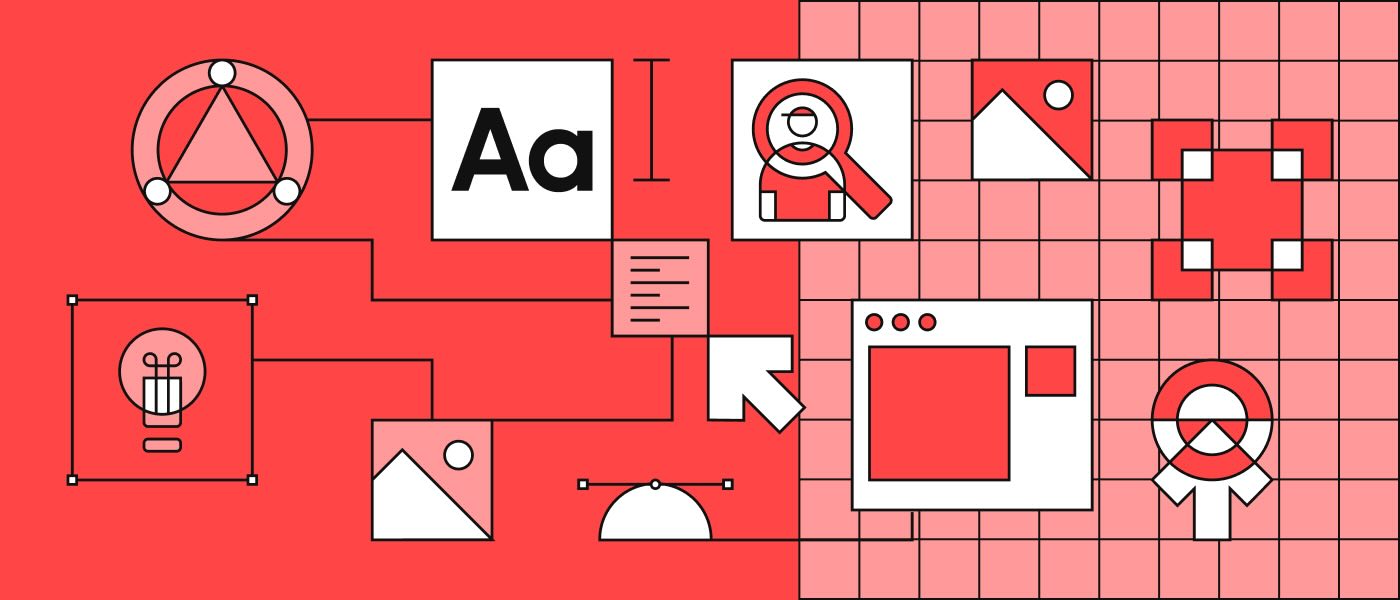B2B Branding Services

Discover how expert B2B branding services can strengthen your brand strategy, positioning, and messaging. Solutions to build recognition, trust, and long-term business success
B2B Branding Services For Scalable Growth
A strong B2B brand is more than a good-looking logo. It reduces risk for buyers, makes your story easy to repeat inside a company, and helps you enter new markets with less friction. Our team can help you create a brand that speeds sales and supports long-term growth.
Branding in B2B: what makes it different?
In B2B, you are guiding a group through a careful decision, not inspiring a quick impulse buy. People need proof that you deliver as promised, again and again. That is why your brand has to work the same way across website pages, sales decks, proposals, events, and partner portals. When the experience is consistent, trust grows. Buyers feel confident that your company is reliable and low risk. Your identity, message, proof points, and customer experience should reinforce the same promise from first contact to renewal. Do this well and you reduce objections, shorten cycles, and make it easier for champions to sell you internally. If you want help building that kind of system, we can help plan and execute it with you.
Why does strategy come first? Before changing a logo or tagline, get clear on what makes you win. Discovery work, like interviews, buyer research, win or loss reviews, and competitive analysis reveals the real reasons deals move or stall. With that clarity, leadership, product, sales, and success can align on what the brand stands for and how it should behave. When creative choices flow from validated positioning, work moves faster, approvals get simpler, and teams adopt the result because they understand the reason behind it. This saves time and budget while improving outcomes. Our team can help run this process and turn research into a practical plan.
Key components of a B2B brand strategy
- Purpose, vision, values: what you stand for, where you’re going, how you behave when no one’s watching
- Audience personas: economic buyer, technical evaluator, end user, champion—each with different pains and proof needs
- Category and competitors: how the market frames you today (and how you want it to)
- Positioning and value propositions: the territory you can own credibly and profitably
- Messaging architecture: from high-level narrative to persona-specific proof
- Go-to-market implications: channels, motions, and plays your brand must enable
Treat these as working tools, not shelfware. When they are clear, product names make sense, sales decks get shorter, and campaigns reuse strong ideas instead of starting from zero. Most importantly, you gain a filter that helps you say no to work that does not support the strategy. If you need to turn these items into a usable playbook, our team can help.
Positioning: defining the brand’s unique value
Strong positioning tells a buyer why you are the best choice, not only why change is needed. It connects your differentiators to outcomes your ideal customers care about. Good positioning is specific enough to guide what you promote, which segments you focus on, and which claims you retire, yet flexible enough to grow as your offer expands. You know it is working when your homepage promise matches your sales story, roadmap, and customer results. That level of consistency reduces friction and helps committees reach agreement faster.
Messaging frameworks for B2B
A messaging framework turns strategy into clear language teams can use everywhere. Start with a simple narrative that states the problem, the stakes, and the resolution. Add value pillars with benefits and proof. Then map messages to each persona and funnel stage. The CFO wants numbers, the architect wants technical credibility, and the end user wants workflow wins. Because buying journeys are rarely linear, support different entry points: a technical one-pager, a business case, and an executive story. When the framework is strong, sales feels supported and marketing knows exactly what to say next. If you want a framework you can roll out across teams, we can help you build it.
From strategy to execution: brand identity development
Identity turns strategy into signals people recognize fast. You translate ideas like stability, clarity, or speed into visual and verbal cues that stay readable in busy contexts such as conference halls, dashboards, or long PDFs. The shift from strategy to identity should include attributes-based moodboards, typography studies that fit the tone, scalable iconography, and prototypes for real use cases like pricing slides or case studies. Involving the people who will use the system increases adoption and reduces drift. We can help you build and document a system that teams actually enjoy using.
Visual identity for B2B brands
Logos and color are only the start. You need a typography stack that renders well in product UIs and slides, a color system with neutrals for data and a disciplined accent palette for focus, and motion rules that feel purposeful in demos and explainers. Practical guidelines matter most. Include co-branding rules, data visualization styles, document templates for sales and success, and parameters for UI components so product teams are never guessing. The result is an experience that looks dependable at every size, from favicon to 60-page RFP. If you need templates and a quick-start brand kit, we can help you produce them.
Tone of voice and messaging hierarchy
Voice in B2B should be clear, confident, and concrete. Aim for warm without being casual, technical without being opaque, and persuasive without hype. Use a simple structure: headline promise, subhead on how it works, and body copy with proof. Extend this pattern across the site, product pages, release notes, sales decks, and help content so ideas build instead of repeating. As you scale into new markets, create “say this / not that” examples, case study intros, renewal emails, and objection handlers. Teams learn faster from examples than from adjectives.
Rebranding: when and how to do it right
Rebrand when the business changes or the current system cannot scale. Common triggers include a new ideal customer profile, a merger, a new pricing model, or a perception that lags behind the product. Start by defining the business outcomes you seek, such as improved segment fit or faster sales cycles. Treat the effort like a change program. Build an internal group of champions, share early prototypes with customer-facing teams, and run a pilot launch across the site, pitch, and one campaign. A clear cutover plan for asset migration, tool updates, redirects, and training keeps teams organized and the market excited. If you want a rebrand plan that reduces risk, our team can help.
Common pitfalls in B2B rebranding projects
- Treating brand as a design project, not a business lever: misaligns effort and outcomes
- Skipping research: you end up solving the wrong problem beautifully
- Underestimating enablement: sales keeps using old decks, old logos, old language
- Weak governance: no owners, no guardrails, brand drifts within weeks
- Big-bang launch with no activation plan: awareness spikes, behaviors don’t change
You can avoid each pitfall with a solid brief, clear decision rights, and a rollout plan that prioritizes the assets people use every day. When you design for real life such as RFPs, product screenshots, and webinars, adoption follows. If you want a pragmatic governance plan, we can help you set it up.
Working with a B2B branding agency
The right partner shortens timelines, brings a fresh view, and installs practices you can keep. Agencies see patterns across markets and know which moves create impact. They also act as an objective voice when internal opinions diverge. Think of a good partner as a system builder who codifies your story, designs the kit, and equips teams to use it. To get the most from the engagement, assign a decision-maker, route feedback through a small core group, and include sales and product at key points. The outcome is a brand that reflects your reality and one your people are proud to use. If that sounds useful, our team can help you scope and run the work.
Choosing the right partner
- Sector relevance: do they understand your buyers’ world and constraints?
- Proven framework: clear phases, deliverables, and decision gates
- Collaboration style: access to senior talent, workshops that drive alignment
- Evidence of outcomes: case studies tied to business metrics, not just aesthetics
- Enablement focus: templates, training, governance—not only a pretty deck
Branding and marketing: integration is key
Brand should power your marketing. It shapes your point of view, defines creative rules, and keeps campaigns recognizable. When integrated, the message ladder aligns with the funnel. Problem awareness content reflects your narrative. Solution content maps to pillars. Conversion assets mirror sales proof. Integration also boosts efficiency. Content teams reuse assets, paid media stays consistent, and lifecycle messages match the website. Over time, you build distinct memory cues that help performance even as channels change.
Maintaining brand consistency across channels
Consistency happens when the right thing is the easy thing. Provide living guidelines, ready-to-use slide and one-pager templates, component libraries, and a shared asset manager with version control. Offer short training for sales, success, and recruiting so everyone knows how to apply the system in their daily work. Keep governance practical. Appoint owners, set review thresholds, and run periodic audits on high-impact surfaces. Update the system with intent as products and markets evolve. If you want help building this toolkit, we can help you ship it quickly.
Frequently asked questions
What’s the difference between B2B and B2C branding?
B2C often aims for fast, emotion-led choices by individuals, while B2B earns confidence across a group over time. That pushes you toward clarity, proof, and consistency across many materials such as pitch decks, demos, and security documents, while still using a human, credible story. Our team can help you shape both the proof and the story.
How long does a B2B rebranding process typically take?
Timelines depend on scope. A focused, strategy-led rebrand for a growth-stage firm often runs 12 to 16 weeks from discovery to launch-ready assets. Larger mergers or deep product renames add time for architecture, legal checks, and change management.
What should we look for in a B2B brand strategy agency?
Look for sector fluency, a clear method, senior involvement, outcomes-based case studies such as pipeline velocity or win rate, and a plan for enablement with templates, training, and governance so the brand lives after launch.
Can small B2B businesses benefit from branding services?
Yes. Early clarity on positioning and message improves founder-led sales, reduces costly pivots, and sets a strong base for hiring, fundraising, and product expansion.
How do you measure the ROI of branding in B2B?
Track leading signals like direct traffic, branded search, win or loss reasons, message recall, and cycle time. Connect them to lagging metrics such as pipeline quality, win rate, expansion, and CAC payback. Run before-and-after checks around key launches like a new site or narrative rollout. If you need help setting up these dashboards, we can help you define and track the right metrics.













